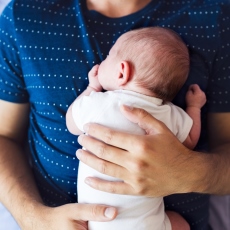
What are birth defects?
A birth defect is a problem that happens while a baby is developing in the mother's body. Most birth defects happen during the first 3 months of pregnancy. One out of every 33 babies in the United States is born with a birth defect.
A birth defect may affect how the body looks, works, or both. Some birth defects like cleft lip or neural tube defects are structural problems that can be easy to see. Others, like heart disease, are found using special tests. Birth defects can range from mild to severe. How a birth defect affects a child's life depends mostly on which organ or body part is involved and how severe the defect is.
- Birth Defects (National Library of Medicine)What are birth defects? A birth defect is a problem that happens while a baby is developing in the mother's body. Most birth defects happen during the first ...
- Craniofacial Abnormalities (National Library of Medicine)... the bones of the skull and face. Craniofacial abnormalities are birth defects of the face or head. Some, like cleft ... palate, are among the most common of all birth defects. Others are very rare. Most of them affect ...
- Hereditary urea cycle abnormality is an inherited condition. It can cause problems with the removal of waste from the body in the urine.
- Aicardi syndrome is a rare disorder. In this condition, the structure that connects the two sides of the brain (called the corpus callosum) ...
- Walking abnormalities can be caused by many different types of problems. Problems with the joints, (such as arthritis), bones ( ... are due to a physical condition. Some walking abnormalities have been given names: Propulsive gait -- a stooped, ...
- Low-set ears and pinna abnormalities refer to an abnormal shape or position of the outer ear (pinna or auricle). ... most cases, a health care provider finds pinna abnormalities during the first well-baby exam. This exam ...
- ... during pregnancy can reduce the risk for certain birth defects. These include spina bifida, anencephaly , and some heart ... This is because many pregnancies are unplanned. Also, birth defects often occur in the early days before you ...
- Nail abnormalities are problems with the color, shape, texture, or thickness of the fingernails or toenails.
- ... disorders of the female reproductive tract include: Cloacal abnormalities: The cloaca is a tube-like structure. In ... body. This can cause stomach swelling. Some cloacal abnormalities may cause a female infant to look like ...
- Skeletal limb abnormalities refers to a variety of bone structure problems in the arms or legs (limbs). ... The term skeletal limb abnormalities is most often used to describe defects in the legs or arms that are due to a problem with genes ...



